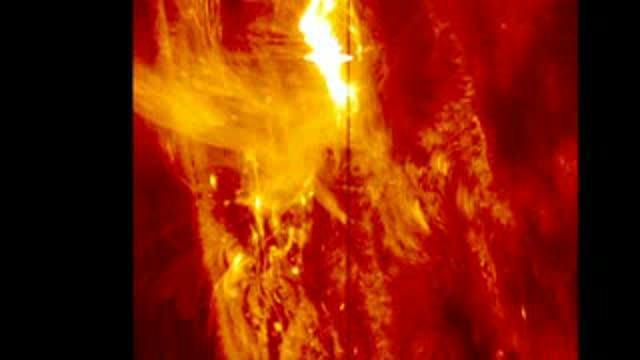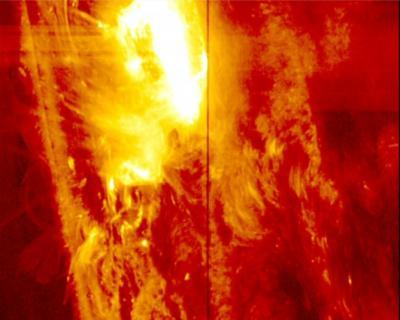The Interface Region Imaging Spectrometer (IRIS) mission studies the chromosphere, that layer of the sun's atmosphere that is key to regulating the flow of energy and material as they travel from the sun's surface out into space.
Along the way, the energy heats up the upper atmosphere, the corona, and sometimes powers solar events such as this flare. IRIS is equipped with a spectrograph that can separate out the light it sees into its individual wavelengths, which in turn correlates to material at different temperatures, velocities and densities.
On January 28th, the spectrograph on IRIS was pointed right into the heart of a flare when it reached its peak, and so the data obtained can help determine how different temperatures of material flow, giving scientists more insight into how flares work.

On Jan. 28, 2014, NASA's newly-launched Interface Region Imaging Spectrometer, or IRIS, observed its strongest solar flare to date. Credit: NASA/IRIS/SDO/Goddard Space Flight Center

On Jan. 28, 2014, NASA's IRIS witnessed its strongest solar flare since it launched in the summer of 2013. Credit: NASA/IRIS
A large volume of science data is downlinked via Kongsberg Satellite Services, (KSAT) facilities through a cooperative agreement between NASA and the Norwegian Space Centre. NASA's Goddard Space Flight Center in Greenbelt, Md., oversees the Explorers Program from which IRIS evolved.
Source: NASA/Goddard Space Flight Center





Comments